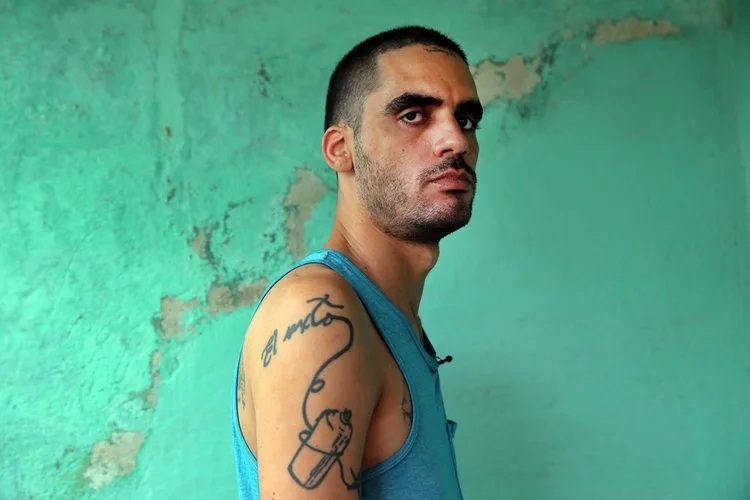Following the death of Cuban leader Fidel Castro last week, there was renewed optimism of a move towards a less restrictive culture for artists, something that has been widely debated since the recent thawing of US/Cuban relations. However, any such optimism was short-lived, when on the morning after the revolutionary’s passing, local street artist and anti-Castro activist Danilo Maldonado Machado, also known as El Sexto, was arrested in Havana for calling on fellow citizens to celebrate
Danilo Maldonado Machado / Credit: Alejandro Ernesto/EPA
Cuba’s artistic tradition is as rich as its history, and despite a series of repressive governments the local art scene has continued to thrive. However, the American embargo and a lack of Internet access severely constrained the development of the industry over the years, with many Cuban artists often forced to emigrate and take up international residencies as a result.
When in December 2014 President Obama began the process of restoring diplomatic relations with Raúl Castro’s government, thus ending the 54-year embargo on trade with and travel to the island nation, it was hoped that the loosening of restrictions would invigorate the Cuban art scene, both at home and abroad. And although it was widely, and reluctantly, acknowledged that any significant change or increased freedom for artists would be unlikely to materialize anytime soon, Maldonado Machado’s arrest seems to have rendered such freedoms out of reach for the foreseeable future. “One has to be realistic," said Nick Korniloff, director of Art Basel in Miami, "even though Castro has passed away, decades and decades of tyranny that have happened in that country are just not going to disappear because one man has passed away".
'El Sexto' spent ten months in prison for painting the names 'Fidel' and 'Raul' on two pigs / Credit: @AmnestyOnline
Danilo Maldonado Machado, who has a history of coming into conflict with the state authorities, recently attempted to leave Cuba to travel to Miami for this year’s Art Basel event, where several pieces of his work are being exhibited. But although he had been cleared to travel by officials, he was ‘marked’ at the airport and not allowed to leave the country.
"Even though Castro has passed away, decades and decades of tyranny that have happened in that country are just not going to disappear because one man has passed away."
Although many local artists do not have such a strained relationship with the authorities, neither do they shy away from expressing political views through their work, much of which is now inspired by this current period of transition.
Miami Art Basel, which runs from 1st December to 4th December, is playing host to several Cuban artists, whose experiences with the government and issues of censorship and freedom vary widely.
Upperworld (2015) by Lorena Gutiérrez
Upperworld (2015) by Lorena Gutiérrez
Among them is Havana-based Lorena Gutiérrez, who is part of a nine-artist delegation with Miami Dade College’s Museum of Art + Design. Her site-specific installation “Upperworld” is a politically controversial piece, having been inspired by white-collar corruption, but it was exhibited at a state-sponsored gallery in Cuba and approved by the country’s Ministry of Culture.
The Wrinkles of the City by José Parlá, Havana, Cuba
Prose by José Parlá
José Parlá, a New York-based former street artist of Cuban descent, concedes that censorship does remain but that it is applied seemingly randomly. His exhibition “Roots” at the Young Arts Jewel Box includes a painting that details the history of Cuba and the recent thawing of relations with the U.S.
Tsunami (2009) by Humberto Diaz, banned in Japan due to sensitivity issues
Havana-based Humberto Diaz, an artist also with the Miami Dade College delegation, has experienced censorship of his work in countries other than Cuba, where many of his more controversial pieces have been exhibited.
The overall consensus among Cuban artists seems to be that varying degrees of censorship on the island continue, and that Castro’s death alone isn’t going to prompt the lifting of the remaining restrictions on freedom of expression.








